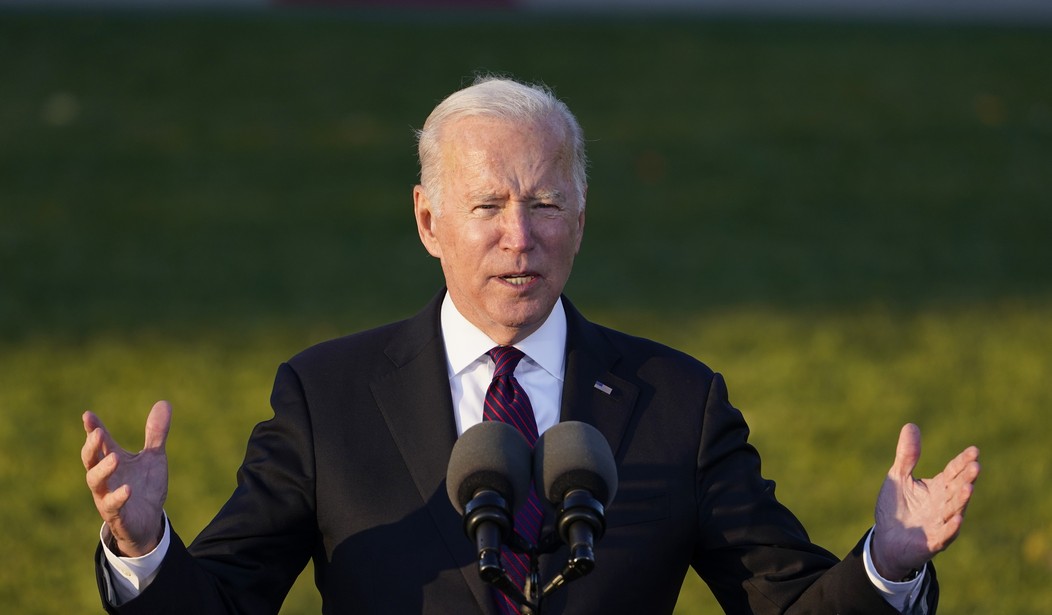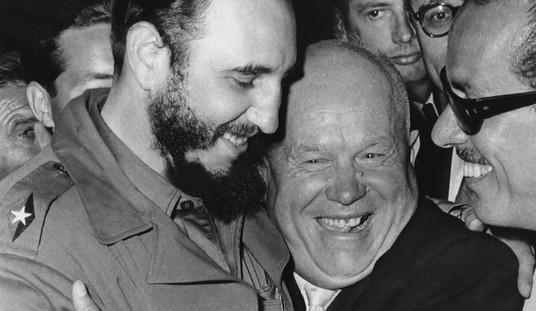It was a 6-3 vote to block the mandate for companies with more than 100 workers and a 5-4 vote to let the mandate for health care workers proceed.
The two justices in the majority in each case? Swing voter John Roberts, of course, and … Brett Kavanaugh, whose vote to uphold the second mandate was decisive. It’s the Kavanaugh Court now!
David French identifies the key line from the two opinions:

The mandate for health care workers was issued under the auspices of CMS, applying to all facilities that receive federal Medicare and Medicaid funding. The federal government has always had wide leeway to attach strings to the taxpayer cash it pays to private entities when it contracts with them. If you don’t want to abide by Uncle Sam’s conditions, like making sure your entire staff is vaccinated, don’t sign the deal. By the same token, the federal government doesn’t have wide leeway to grab private business owners by the lapels and tell them to vaccinate their staff or face steep fines. That’s a novel exercise of authority, one that’s increasingly hard to justify on scientific terms as Omicron cuts a swath through the vaccinated and unvaccinated alike.
The bottom line in the OSHA ruling: An agency that’s designed to regulate safety in the workplace has to stick to the workplace.

“Permitting OSHA to regulate the hazards of daily life—simply because most Americans have jobs and face those same risks while on the clock—would significantly expand OSHA’s regulatory authority without clear congressional authorization,” the conservative majority goes on to say. That hints at the logic of the “major questions doctrine,” a topic Neil Gorsuch took up in his concurrence and which came up during oral argument last week. The Court typically shows deference to administrative agencies like OSHA, but when an agency institutes a policy that’s unusually sweeping in scope and not clearly encompassed by its legislative mandate, the Court may conclude that it requires a separate, specific grant of authority from Congress to justify it. Gorsuch:

Notably, only Clarence Thomas and Samuel Alito joined him in his concurrence. Roberts, Kavanaugh, and Amy Coney Barrett seem less enthused than the other three about using this as an opportunity to throw a roundhouse at the administrative state. That’s a division to watch in the years ahead.
As for CMS’s mandate for health care workers, the Court draws a simple distinction. It’s all about the Benjamins, i.e. the government’s power to impose conditions on the receipt of taxpayer funds.

“Congress has authorized the Secretary to impose conditions on the receipt of Medicaid and Medicare funds that ‘the Secretary finds necessary in the interest of the health and safety of individuals who are furnished services,” the majority notes at another point, claiming that “a COVID–19 vaccine mandate will substantially reduce the likelihood that healthcare workers will contract the virus and transmit it to their patients.” I’m … not so sure that’s true in the age of Omicron, but the Court is apparently willing to defer to CMS’s considered judgment that it’s true. In any event, if a health care facility doesn’t want to have to vaccinate its workers, the remedy is simple. Just stop accepting payment from the federal government for services.
Clarence Thomas, joined by Alito, Gorsuch, and even Barrett on this one, dissented by countering with the majority’s reasoning from the employer mandate case. It may be true that CMS has power to impose conditions on recipients of taxpayer dollars, but that power isn’t unlimited. The agency is still bound by the limits of the authority granted to it by Congress. After reading the statutes and relevant regulations, Thomas can’t find anything that specifically empowers CMS to mandate vaccinations among health care workers:

At a gut level, from a health standpoint, the two rulings make sense. We want health care workers to take every precaution to limit transmission because they cater to the sick and elderly, the two groups at highest risk of severe illness from COVID. Forced to choose between stretching the feds’ power over vaccination and placing the frail and infirm at greater risk of dying, the Court tilted towards the former. But the calculus changed as the setting changed to the average American workplace, where those exposed to the virus by co-workers will be at lower risk of a bad outcome. In that case, the Court reverted to skepticism of expansive government power. Feels like a classic half-a-loaf John Roberts compromise.
I used to think that SCOTUS cashiering the federal employer mandate wouldn’t matter much, that businesses would just take the baton from Biden and impose their own company-wide mandates in the aftermath. But with Omicron replacing Delta, I’m not sure anymore. Keeping workers on the job has become a far more urgent priority than trying to protect them from infection by a variant that seems capable of evading all precautions. California is so strapped for health care workers at the moment that they’ve told doctors and nurses who have tested positive but are asymptomatic to come back to work even if they’re still infectious. There’s been an outcry locally about that but the state is choosing the least bad option, making sure hospitals are staffed even if that means accepting an elevated risk of workers infecting their patients. I wonder if the White House doesn’t quietly wish that SCOTUS had blocked the CMS mandate, giving states an excuse to put unvaccinated doctors and nurses back to work at a moment of crisis in health care. Oh well. Biden could always just withdraw the mandate.








Join the conversation as a VIP Member